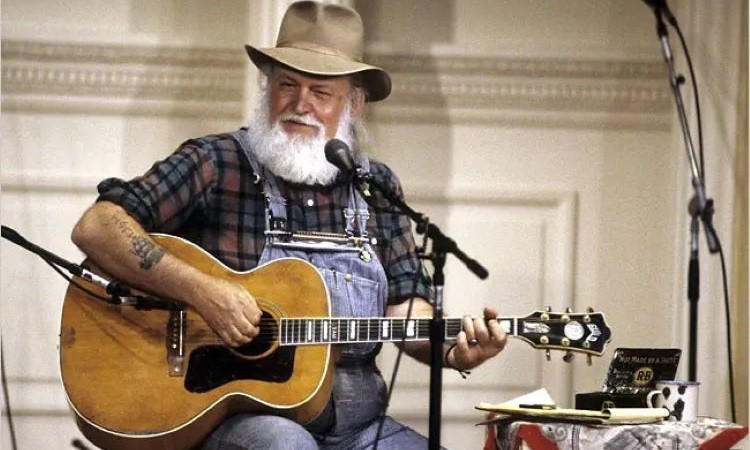Essential Folk Songs for Labor Day

Throughout history, wherever people have organized for a fair wage and a safe workplace, there has always been music involved. In early folk song collecting, in fact, “labor music” was so prevalent that it was believed to be a separate category of music from “folk.”
Though the federal holiday of Labor Day was signed into law in 1894 by Grover Cleveland, efforts to make a national holiday that recognized the successes of the labor movement go back even further.
Yet, it wasn’t until the early 20th century that folksingers like Woody Guthrie and Pete Seeger—and their cohorts in the Almanac Singers (Bess and Alan Lomax, Sis Cunningham, Butch Hawes, Millard Lampell, Lee Hays, sometimes Lead Belly and others)—began working labor songs into their repertoire and recordings.
Guthrie, especially, enjoyed singing for labor unions and saw labor songs as equivalent to all the other kinds of songs he sang: love songs, historical songs, children’s songs, and so on. Seeger was heavily influenced by him and also by their mutual friend Zilphia Horton from the Highlander Folk School in Tennessee. She was intentionally using folk songs and labor songs side by side for the purpose of organizing within the labor movement during the 1930s and ‘40s.
The Almanacs were among the first to record a full album of just labor music, but many others have come along since. In fact, throughout the 20th century, the intertwining of folk and labor songs became so tight that labor songs like “We Shall Not Be Moved” and “Solidarity Forever” defied the understanding of the early folklorists and became part of the American folk canon.
To celebrate Labor Day and this rich history of labor songs in folk music, the first hour of this week’s Folk Alley Radio Show will be all labor songs. You can hear the full hour by tuning into your local public radio station throughout Labor Day Weekend, listen on-demand via FolkAlley.com or our mobile app, or scroll down for a taste of what host Elena See will be spinning.
Utah Phillips – “There Is Power in the Union”
There have been few greater champions of the legacy of Joe Hill than the late Utah Phillips. Hill was the IWW (Industrial Workers of the World) songwriter and song leader whom many believe was framed on a murder charge. His contributions to the IWW’s Little Red Songbook were toted around with Wobbly workers from jungle camp to worksite for many years. Phillips brought them to the stage.
Pete Seeger – “Solidarity Forever”
This song, originally written by Ralph Chaplin and collected in Horton’s 1939 songbook for the Textile Workers Organizing Committee, was set to the tune of the Battle Hymn of the Republic. Seeger certainly knew the song’s history and origins. His booming baritone certainly gave power to its refrain.
Rosalie Sorrels – “I Am a Union Woman”
Rosalie Sorrells was a long-beloved folksinger who continued to tour and perform for more than a half-century. Here, on this song originally written by Aunt Molly Jackson, Sorrels sings the refrain about the NMU (National Miners Union) with a spirit that makes clear it could be sung for any union.
Hazel Dickens – “The Rebel Girl”
This song is another from Joe Hill’s contributions to the Little Red Songbook. Indeed, the Industrial Workers of the World was far ahead of its time in the fact that it welcomed women, immigrants, and people of color into its ranks while many other unions were segregated. The tune was reportedly written for—or at least dedicated to—Elizabeth Gurly Flynn.
Valerie June – “Workin’ Woman Blues”
As evidence of how intertwined work songs have become with the folk canon, here’s a more contemporary classic from Valerie June’s 2013 breakthrough, Pushing Against a Stone. Like many of the work songs that came before it, it sees June fantasizing about a time when so much work is no longer necessary just to get by.




